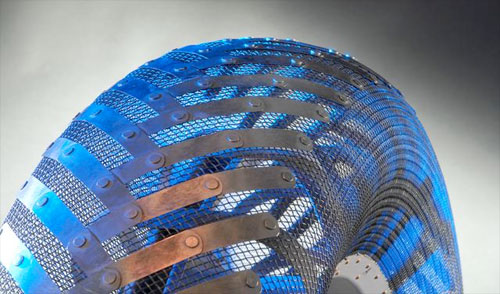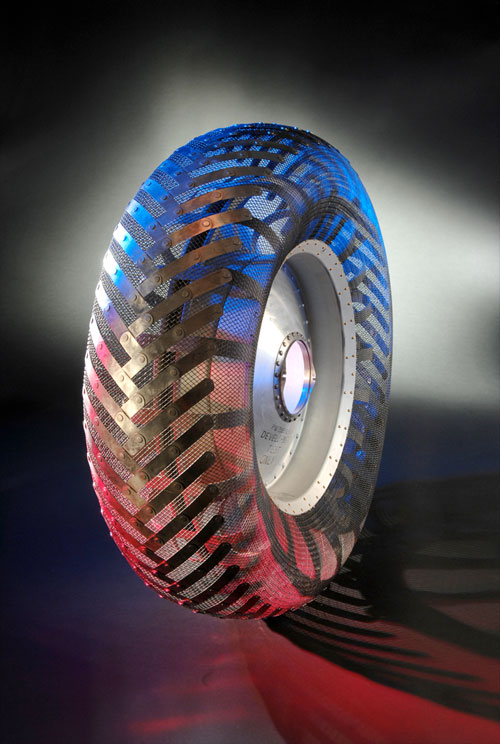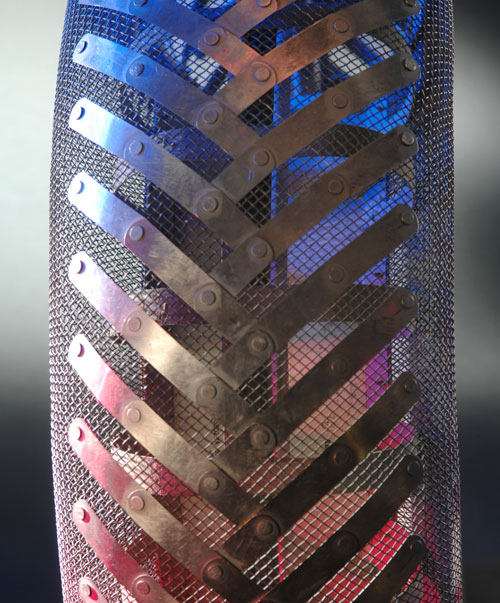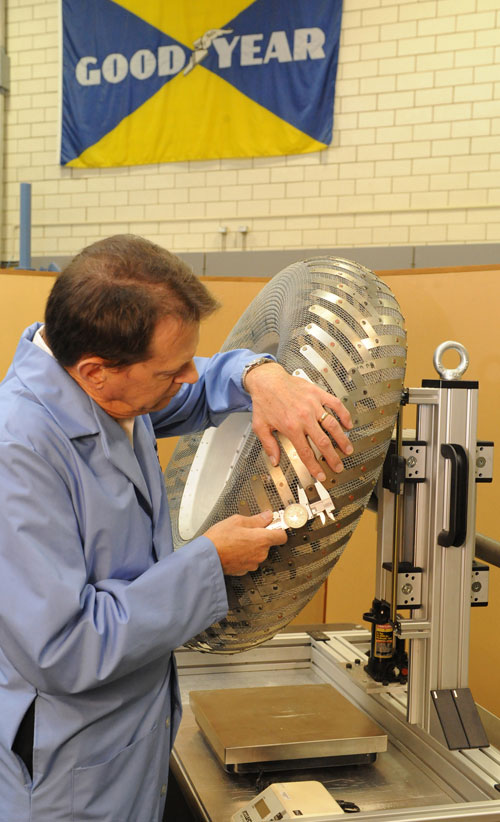Goodyear and NASA Successfully Recreate Original Moon Tire; Work sets baseline for future space missionsThe Goodyear Tire & Rubber Company and NASA have taken one small step backward to make one giant leap forward and help prepare for future missions to the moon and to Mars.
Goodyear and the NASA Glenn Research Center (GRC) recently completed a jointly-funded project for the development and production of twelve replicates of the original wire-mesh moon tire used on the Apollo Lunar Roving Vehicle in the early 1970s. This was the first step toward understanding this unique non-pneumatic tire technology, and its applications on both the moon and Earth.

"Although there was some reference material for designing the replicate tire, there was little detail about the manufacturing process," said Goodyear Project Leader Rick Laske, noting how the team had to reinvent techniques to recreate the wire mesh tire. The team examined one of the moon tires on display at the National Air and Space Museum in Washington, D.C., and corresponded with two retired members of the Apollo Lunar Roving Vehicle team, who each had a tire that had been given to them as a souvenir for their work. Examination of the original moon tires provided the primary reference information for judging the quality of the replicates, according to Vivake Asnani, NASA's principal investigator.
Four major components comprise the tire and wheel design: mesh, tread, inner-frame, and hub. The mesh is woven from piano wire and the tread is a series of metal strips intended to protect the mesh from impact while providing increased contact area for floatation in soft soil.
An inner-frame, comprised of a relatively rigid metal structure, prevents the mesh from over-deforming during impact, while the hub holds the mesh and inner-frame together and connects the assembly to the vehicle.
"Before the wire mesh could be woven, 3,000 feet of wire had to be custom-crimped and cut into 800 pieces," said Laske. A hand loom was designed to weave the crimped wires into a rectangle measuring approximately 100 inches long and 25 inches wide. Each end of the rectangular weave was then interlaced by hand to form a cylinder, which behaves in a manner similar to a child's finger trap puzzle, lengthening and shortening with changes in its diameter.
Sides of the mesh cylinder were pulled down and clamped to a circular jig, roughly the size of a wheel hub, to give the mesh the shape of a tire. Then the jig and mesh were baked in an industrial oven to relieve residual stress from the wire.
The twelve replicate tires were evaluated for geometry, stiffness, and other performance factors, and compared against data from the two antique moon tires, as well as limited measurements taken in the 1960s. "The measurements indicate that the original and replicate wire mesh moon tires have nearly identical mechanical properties," said Asnani, "We are now testing the replicates to determine their traction and endurance capabilities. These data will enable NASA and industry to determine possible applications for the wire mesh tire."
"There was great synergy in this project, and we are continuing our collaboration to mature this technology," Asnani added. Goodyear's and NASA's expertise are now being applied to the development of a second generation of tires, capable of outfitting a future fleet of lunar vehicles.















